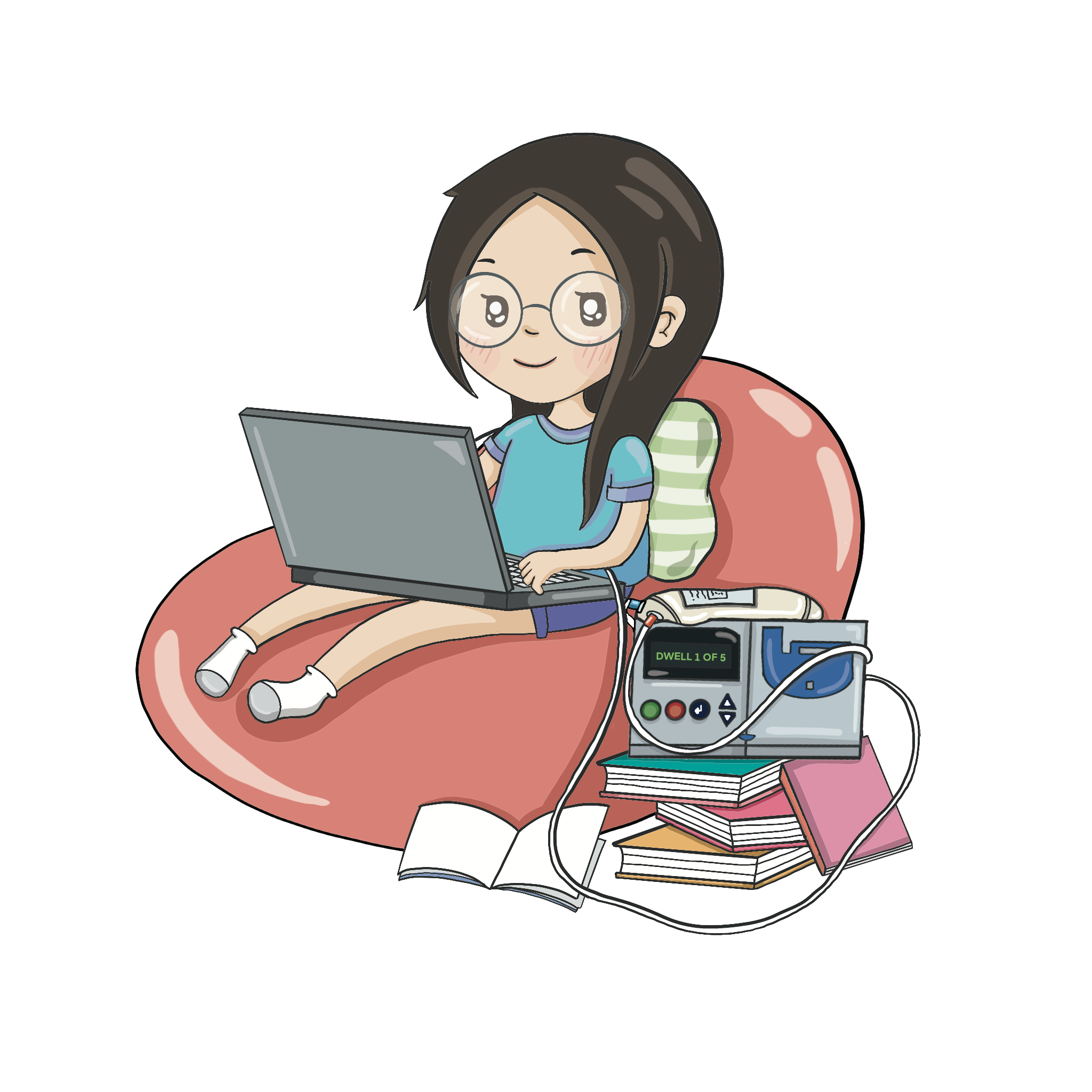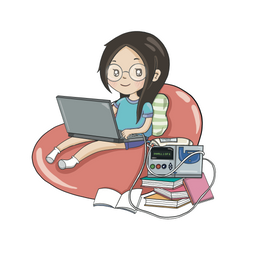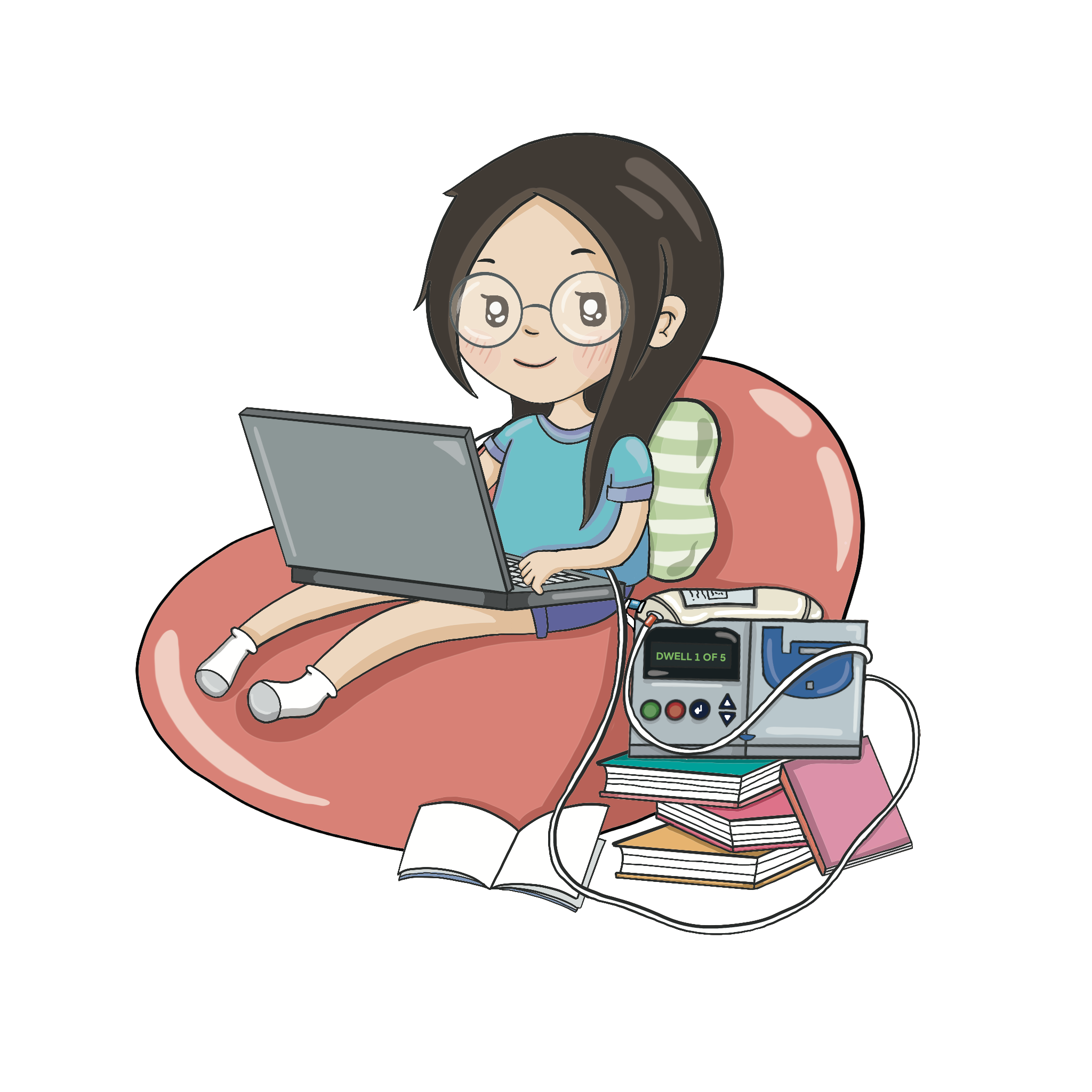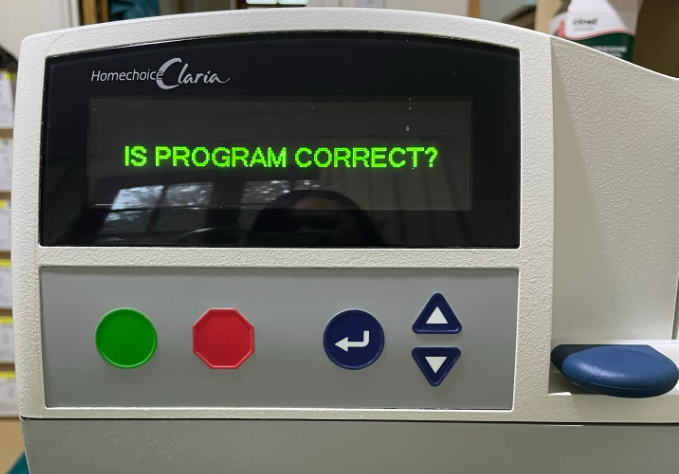Everything You Need to Know About The Peritoneal Dialysis Catheter Insertion Procedure

Huzzah! You have joined the clan of Home Dialysis Patients!
😊Welcome
Or perhaps you are still considering Home PD as an option. Hopefully, I shall dispel any fears you may have over the insertion procedure!
Today's post will be about my experience of having my PD Catheter placed. Please note that this is my experience of the procedure and may not be the same for everyone and that this retelling shall be from a patient's perspective only. I will not be delving into any medical or scientific knowledge on what or how the procedure is performed!
A Little About My Kidney Failure Story
I had crash landed in A&E at the age of 23 with End Stage Renal Failure in urgent need of a blood transfusion. Who knew the anaemia would get to me first before the dialysis!
I was eventually moved to the Woman's Renal Ward, where I resided for just over a month. I did begin haemodialysis via an emergency catheter line in my thigh. However this was only temporary!
I had already, as you can imagine during a pandemic, decided to choose Home Peritoneal Dialysis.
When Did I Have My PD Catheter Inserted?
My catheter was placed in November 2020, at the height of the pandemic, almost two weeks after my blood transfusion in A&E and a week after my emergency HD catheter insertion in the ward. I suspect the delay was largely due to the pandemic and constraints on resources at the time. Thankfully, during this month long stay in the ward, I always remained in the Non-Covid women's ward.
Where Did I Have My PD Catheter Procedure?
Unlike my temporary HD line, which I had inserted basically bedside in the wards, I had my PD catheter procedure performed in a small room somewhere else in the hospital. It is important to note that the language used by the doctors and nurses was 'procedure' and not 'surgery'. I note not even 'minor surgery', which hopefully will provide some relief to those who are anxious about riskiness of the procedure.
Hence, when I say I was in a small room, it really felt like a cupboard room! There was enough space for the main nephrologist, his assisting colleague and my bed and maybe a line of cupboards to one side. It certainly was not the setting of a surgeon's theatre that you might expect to see in medical TV shows.
Who Performed My PD Catheter Procedure?
I was quite lucky to have a nephrologist who was well practiced in performing the procedure. I was informed that he was a vocal proponent for home peritoneal dialysis and had a lot of experience in the procedure. This was of course very reassuring to me. It was evident in his demeanour that he was confident and was very calm about it all. His assisting colleague was another Doctor who was more junior but had already chosen his speciality field in nephrology. Again, was very much reassured that both knew what they were doing!
In the hour or so in the lead up to the procedure, the nurses administered some antibiotics and light sedation medication but otherwise I do not recollect there being a nurses in the room whilst the procedure was occurring.
How Did I Find The PD Catheter Procedure?
Honestly, it was not as bad as I thought. This was my first time ever receiving some kind of medical procedure other than maybe a tooth extraction?! As you can imagine, I was fairly anxious but overall during the procedure I was very peaceful and it was over before I knew it.
How Long is the PD Catheter Procedure?
It was certainly no longer than an hour. Perhaps 45minutes! But honestly I couldn't really tell you. It is certainly not a drawn out affair.
Are You Awake During the PD Catheter Placement Procedure?
In short, Yes.
As it is a medical procedure, I assume it did not warrant or need for general anaesthetic and thus no requirement for a anaesthetist. I believe it was one of the doctors who administered the local anaesthetic, which was probably the worst of the pain during the procedure.
About 30 minutes prior to the procedure, the nurses administered a mild sedative. Just enough to be away with the fairies for a bit but you are entirely awake and if you chose to, yoy could focus your attention but why would you!
Unfortunately, I did have a bit of a reaction to the antibiotics but I think it was user error. The nurses accidentally dripped the antibiotics in a too fast of a flow and basically I was flushed with red splotches! Was a bit unappealing and itchy but subsided in 15 minutes or so.
Can You See What They Are Doing?
I think people ask this because in Caesareans you have a screen between the mother's head and the stomach. You don't have that. If you chose to you could watch the process, I decided not to do so after the local anaesthetic was applied.
Yeah that big needle had me lying down facing the side singing along to my playlist.
How Was Recovery?
Okay... well I may have a been a little bit silly and I blame that definitely on the sedative drugs but I was feeling a bit adventurous and went for a walk soon after I finished the procedure. And that was painful later on when the sedatives wore off.
You are on a steady dose of paracetamol after the procedure, which was effective in removing the pain. However, they do expect you to administer that yourself, which I did not do as soon as I should of! So, yes, it is a bit of a painful recovery. You did just have someone cut into you and put something there that shouldn't be! Nevertheless, it was manageable.
The nurses thought so too as they didn't break out the narcotics this time!
The one notable thing was that I did wake up in the middle of the night bleeding from my stitches, yikes, probably from that walk I mentioned or perhaps I had moved in my sleep. oops. I had to call the nurse who then called the on call doctor at night.
Turns out I just needed some gauze and some added pressure. Was fine after a while!
Not going to lie, I do think I was likely to be a little anaemic still, so even a little bleed did affect my breathing. I watched my O2 saturation go down below 90 and did feel a little faint but I don't know how much of that was just anxiety!
Overall the entire procedure and aftercare was very manageable and I resided in the ward for recovery. I had yet to receive training for PD, so I was reliant on the nurses to do up the machine during that time. I also wouldn't be allowed to go home until I had learnt how to set up the machine, for obvious reasons.
💊 Pain Management: Take The Pain Meds!
Certainly, one of the biggest mistakes I made whilst having the procedure done was during the aftercare. I very much waited for the sedative to wear off before taking the paracetamol provided. 😔
DO NOT DO THIS!
Take the medication BEFORE you feel the pain.
Perhaps even as soon as they present you the paracetamol. I didn't know this as I have never had to deal with pain management before and so it never occurred to me that the reason I was feeling so happy and okay after the procedure was the sedation and local anaesthetic!
Silly I know! But I really never had such procedures before and I suppose I have been raised in a household of being rather conservative when taking pain medication even for a headache. Trust me, the pain is certainly a bit more than a headache and don't suffer it for the sake of being brave or to prove to anyone that you are a strong. There are no medals.
The core idea behind pain management is that you feel no pain! Hence you should follow the prescribed intervals between taking the pain medication and basically chain together dosages back to back until it is no longer necessary.
That way you will be blissfully unaware of the pain until you recover.
Makes a lot of sense really 😅
🎵Listening to Music During the Procedure
This was probably what made my procedure pass so quickly! I asked just before leaving the ward if I could take my phone to listen to music on my earphones and they said YES!
By this point I had a number of mini procedures like catheters, blood transfusions, blood tests, and the not so mini temporary femoral catheter insertion for haemodialysis.
I found listening to music in each of these cases to be a helpful distraction. It's quite interesting finding my Spotify Playlist from back then aptly named "Procedures".
A lot of slow vibes but some occasional up tempo beats too. Perhaps one day I will share this with everyone. The Nephrologist asked me at the end of the procedure what I was listening to so happily and was surprised by some of my choices!
🤔TLDR : Is the Procedure for Peritoneal Dialysis Catheter Placement Painful?
For me, the procedure was not. The recovery was for a couple of days to return a decent level of comfort, however good pain management with given pain medication would have made it a lot better!
- You are on Local Anaesthetic that is you are numbed around the stomach.
- You are given the choice to take some sedatives to make you feel calmer. If feeling anxious as I was, it does help calm the nerves.
- During the procedure there was minimal to no pain, I feel like the worst of it was the needle for the local anaesthetic
- However, you do feel the pressure of the incision and the stitching around the stomach area.
My tip: don't dwell on that feeling. Your brain will make associations to pain rather than you actually feeling the pain. Listening to music whilst on the sedative led to quite a good diversion and perhaps pleasant experience in some ways.
Will I Be Able To Choose Where the Peritoneal Dialysis Catheter is Placed on My Stomach?
Yes to some extent. I think this largely depends on your Doctor. To be honest my nephrologist asked me something like 10 minutes before going into procedure. So I basically left it with him.
However, I understand now that there are some lucky people out there who have planned peritoneal dialysis catheter placements. Who Knew? 🫠
And so you may wish to ponder on where your PD catheter is placed.
Below are some of the brief advice my nephrologist gave me as we began to leave the ward.😂
- If you are right handed you might like to have it on left side of your body. Vice Versa.
There is also some vague choice of how high to place the catheter.
- His suggestion was that many like the exit site higher so that it doesn't interfere with belts or waist bands.
HOWEVER...
I may have to write a separate post about this...but in the three years hindsight that I have... I often regret not having the exit site a little LOWER. As a girl of very short stature, I rather enjoyed a high waisted skirt and pair of jeans.
Unfortunately, that was where my catheter sat.
Albeit, the weight gain from PD day fills, probably would have led me to discard that style of clothing regardless. Nevertheless the return to waist level jeans and skirts did me no favours in the fashion department. 😆
On reflection, it may have been fault in a daze, I said something like "I like wearing high waisted garments" 🙃 , easy for misinterpretation.
I hope this guide was helpful in dispelling any queries or anxieties you may have had about the Peritoneal Dialysis Catheter Procedure!
If you are still feeling undecided between Peritoneal Dialysis or Haemodialysis have you read my article where I explain the 4 dimensions to consider when making your decision? All in the effort to ensure your choice allows you to live your best life on dialysis!
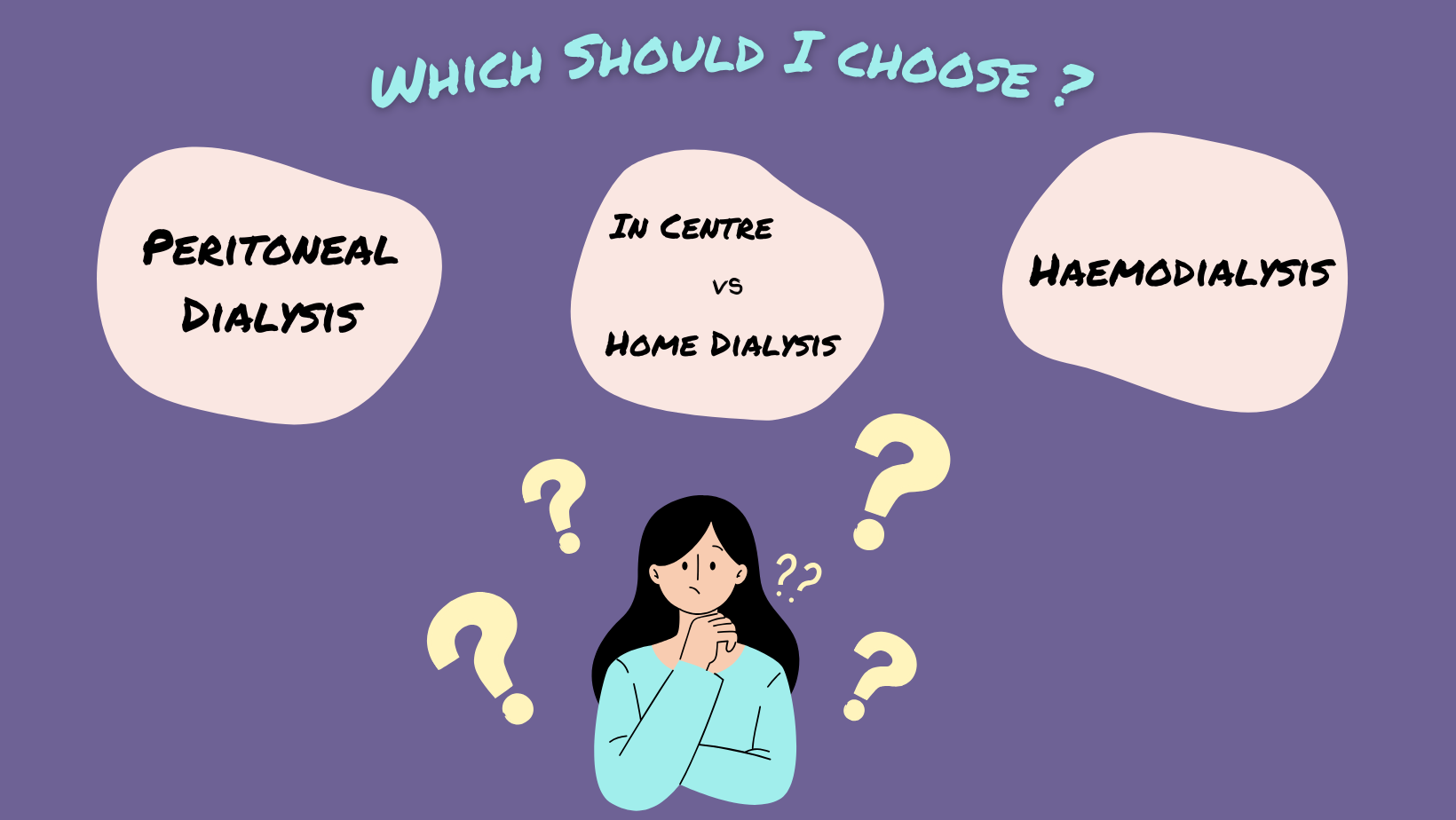
Wishing you the best of luck on your kidney journey!
Lai x
Consider following me on
💜Instagram: @My_Kidney_and_Lai
🧡YouTube: My Kidney and Lai
Subscribers Only Content:
An image comparison between my Peritoneal Dialysis Catheter Exit Site in 2020 on the night I had the procedure vs Now three years later still on home peritoneal dialysis in 2023.
I take great pride in my exit site as someone who has never had a tunnel infection or exit site problems. knock wood.
I even dare to say that the images I've used are a great model for what a healthy exit site should look like!
🩸Warning Graphic Image containing blood and some pretty dark bruising
🩹Image of my bandages bleeding during the night after my procedure.
〰️Image of my stitches post procedure, they fell out naturally over time with the last few picked out by the nurse!
💖Image of my Peritoneal Dialysis Catheter, three years since insertion!
